After a long day motoring against the wind in some decent swells on Lake Ontario we respond to a call from Prescott CoastGuard Radio. I practice my radio skills and learn how to tow a boat back to the harbour.
We were just finishing our trip, First Trip of 2021 – Loyalist Cove to Cobourg. It was a bit rough out, and we were motoring against the wind.
Our VHF chat with the Coast Guard
We are about one nautical mile East of Cobourg marina and I hear the call from Prescott Coast Guard Marina. There is a vessel in distress one nautical mile West of Cobourg, asking for any vessels within the area to assist. It wasn’t a mayday, it wasn’t even a pan pan, just a request. We were in the area and decided to respond.
We reached out to Prescott Coast Guard Radio on VHF 16 and were asked to switch to a working channel (65a?). We told them we would go West and look for the vessel. We can see a few sailboats with full sails out on the horizon. We realize we have no idea what we are looking for, could be a kayak, could be a fishing boat. I quickly ask. They start by providing the exact latitude and longitude. As they start reading out the numbers, I think oh crap, there’s no way I’m going to remember all this, let alone figure out how to quickly enter this into my chart plotter to find. Fortunately they followed up with a description of the vessel, a 37 foot ketch sailboat. The Coast Guard just wanted updates as we progressed in getting the boat back to dock.
An interesting side discussion. The Coast Guard has a beautiful big boat in Cobourg Marina (see top picture) 5 minutes away, ready to go. But they are not in the business of towing boats. Some people question this. But I understand, their priority and focus is ensuring people are safe, they are not there to save your boat.
We find the boat
With the description, she was easy to spot. The only ketch out of the three sailboats we saw. We pull up within shouting distance. One of the crew on deck is waving at us. We then notice the issue. Their bowline is pulled taught against their hull leading to their prop under their boat. They are also having difficulty with one of their sails, it had jammed while they were lowering it.
It’s lumpy out and we are bouncing around but we are far from shore and not going anywhere too fast. I yell out to take their time, we are in no rush. I also say I’m willing to tow them, but let them know I’ve never done it before. They respond that they haven’t either. We laugh together then they wave and get back to work.
Figuring out how to tow for the first time
We look around, the two other sailboats are now hovering around and lowering their sails. They are keeping their distance. We ignore them for now. And start thinking about how to tow a large boat. We get out our 1″ dock lines. And came up with the following plan.
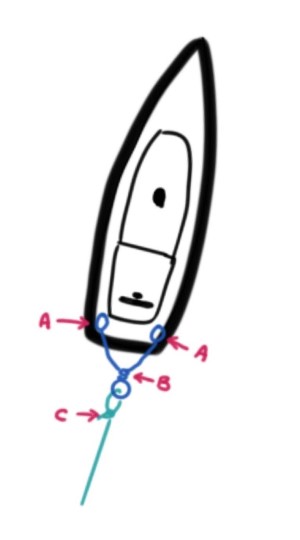
A – our mooring lines have an eye splice at one end. These are slipped over the cleat and run through the fairleed on both sides of the stern.
B – I tie both lines together with a double figure-eight knot.
C – I attach the line from the second boat to our tow line loop using a bowline.
I liked the idea that the lines were easy to quickly remove from our boat. I’m sorry, but if we start getting pulled around and something goes terribly wrong. I’m dropping the lines. The loop was short enough to allow the lines to sink in the water and they would get stopped by our rudder, rather than continuing into our prop. The knot in the middle meant that their line would not be sliding along a single line, causing abrasion and changing the angle of the attachment point.
Our lines are now setup and ready to go. I look over and see one of the crew now on the foredeck pulling out a long docking line from their anchor locker. As they start to coil it up to throw we make a pass. The waves are making our masts swing back and forth, I’m nervous about them touching so keep some distance. We are too early, and turn away for a second pass. Lori up on the bow, ready to catch we come in close and it’s a perfect throw to our deck. Lori grabs the line and brings it back to the stern. Making sure it’s not wrapped around anything we tie it to the center of our tow lines. Perfect opportunity for a bowline here. And do you think I could do it? Under the pressure I fumbled twice. It was a knot but it wasn’t a bowline. I yelled back to say it was going to be a bit. I wanted this right. I didn’t want it to come loose at the wrong time or bind up so it would have to be cut off. Deep breath and slowly tie it the third time. Success!
Towing a larger boat
We slowly pull away, letting the line get taught before we apply any power. My worst fear is us hitting waves at different times and creating a sharp jolt between the boats ripping cleats from the deck. But it was surprisingly gentle. I was just careful to adjust the throttle slowly with gradual tension on the line. We were never going that fast, about four knots for the journey back to the harbour.
One strange thing happened. I look back and see their boat rapidly gaining on us. They must have been surfing a small wave. I throttle up to gain some speed then slow down to prevent a jolt.
As we near the harbour entrance, I loop wide so we can get a straight run at it. Then give it some more throttle so we both have some forward momentum and steerage as we go through the entrance. The waves subside instantly as we enter the harbour.
Docking a boat under tow
Lori called Cobourg Marina on her cell phone and let them know. It was great to see the line up of bright vests on the wall as we were approaching!
Now it was time to figure out how to get them to the wall safely. I’ve seen this technique once during race night. The race committee boat (The Barron) gear box failed and needed to be towed in by a sailboat.
Above is how a true professional does it. I tried to replicate this snap the whip method, slightly less aggressively. We were taking their boat to a long straight concrete wall and were not tight for space like the video above.
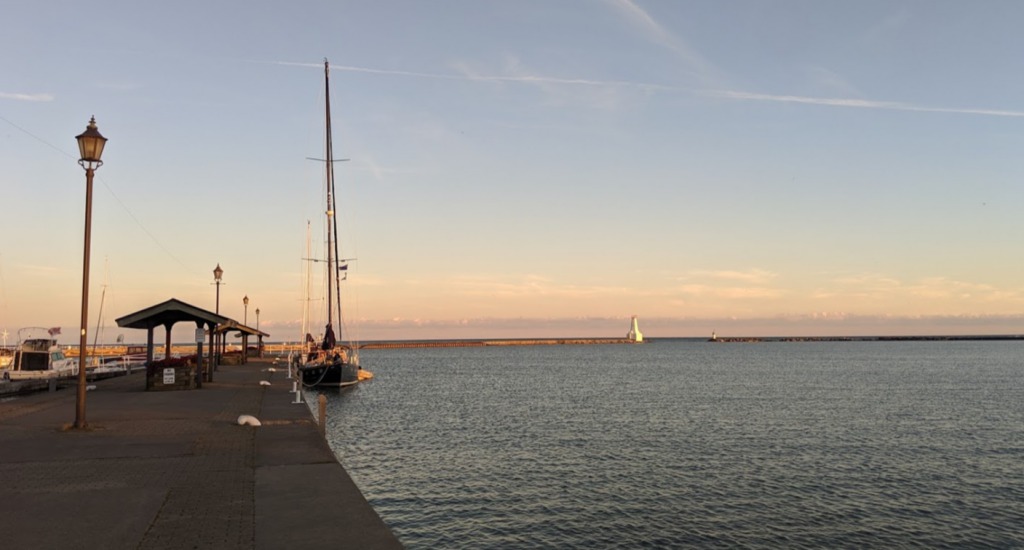
We snap the whip and see they are heading slowly to the wall and are successfully caught by the waiting staff. I instruct Lori to dump our lines off our boat. I figured this would be much easier than trying to untie and collect while we were drifting away.
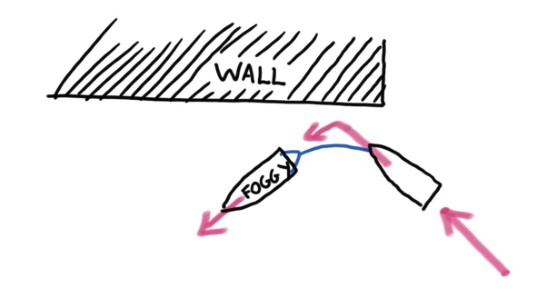
We circle back and head to our slip. After perfectly docking a towed boat we failed miserably on docking ourselves. This was our first dock of the season. And like our first sail of the season we seem to forget things quickly. No harm done, just ended up at 45 degrees in our slip. Fortunately we didn’t have a neighbour to bump into.
Meeting the crew
We walk over to the other boat to collect our dock lines and were offered a well appreciated, and tasty, beer. Sat down and relived our adventure with the crew and learned some interesting things about their interests and hobbies. I’m keeping this private, as one of the crew mentioned their partner (not on the boat) gets nervous about being on the boat. Their story for their delay is that they needed to stop in Cobourg for some “maintenance”.
They mentioned they also saw the other boats in the area and tried hailing them on channel 16 with no response. They even got on deck and started waving at them. We never really knew what those other boats were doing other than observing from a distance. It’s a good reminder to always monitor channel 16 while you are on the water.
The positive things we did
- Foggy was amazing towing a larger boat. She performed flawlessly. I was really surprised how easy it was and how little strain there was on the cleats even in choppy seas.
- It wasn’t a rushed emergency, there was no immediate danger to anyone, so we consciously took our time. Everything was slow, methodical and made sure things were done properly once.
- Remembering that technique from two years ago to snap the whip.
- Lori and I worked awesome together under pressure. Quickly discussed options came up with quick answers and then set forward to do it. For example, dropping the lines were discussed prior and the moment I asked to drop them it was done.
- Good communication between us and the other boat. We both were clear on what was happening and when it was going to happen.
Things I could have done differently
- Take the initial call with the Coast Guard below deck at the chart table with pen and paper.
- Pull out the binoculars.
- Figure out how to monitor both the working channel and channel 16 so I could communicate or potentially hear other boats in area calling us. Or maybe it’s better not to?
- Use the working channel to communicate with the sailboat being towed. Probably would have been easier than yelling. I’m not sure if I would have been able to use 65A that Coast Guard asked us to use. Or if I should have switched to 72 or another pleasure craft working channel.
- Could have simplified the tow line to use just a single line. Looped one side over cleat, to figure eight loop in middle then back to cleat on other side.
- Lifejackets were accessible, but we should have put them on.
- More video! We took zero photos or videos during this adventure. And I’m joking. I’m happy we focused on the task at hand rather than figuring out how to video!
I’m interested to hear your suggestions. How do you tie the lines to tow another boat. Is there anything we could have done differently?

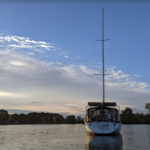
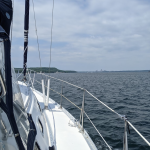
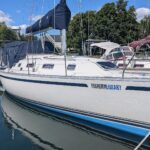
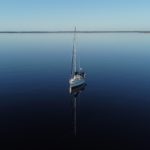
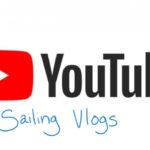
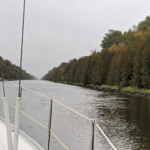
July 12, 2021 at 7:22 am
Hey guys,
Great job. Love the way you described your towing method. Very clear. And good for you to be the helping boat even though it was choppy, you had had a long day of adverse conditions had never done it yourselves and were almost home.
Your friends from Vitae
(On the pass from Port Elgin to the north channel right now)
July 12, 2021 at 3:18 pm
Thanks for the comment! And keep up the great work documenting your trip on sailingvitae.ca!
October 28, 2021 at 5:19 pm
Good story, and good lessons